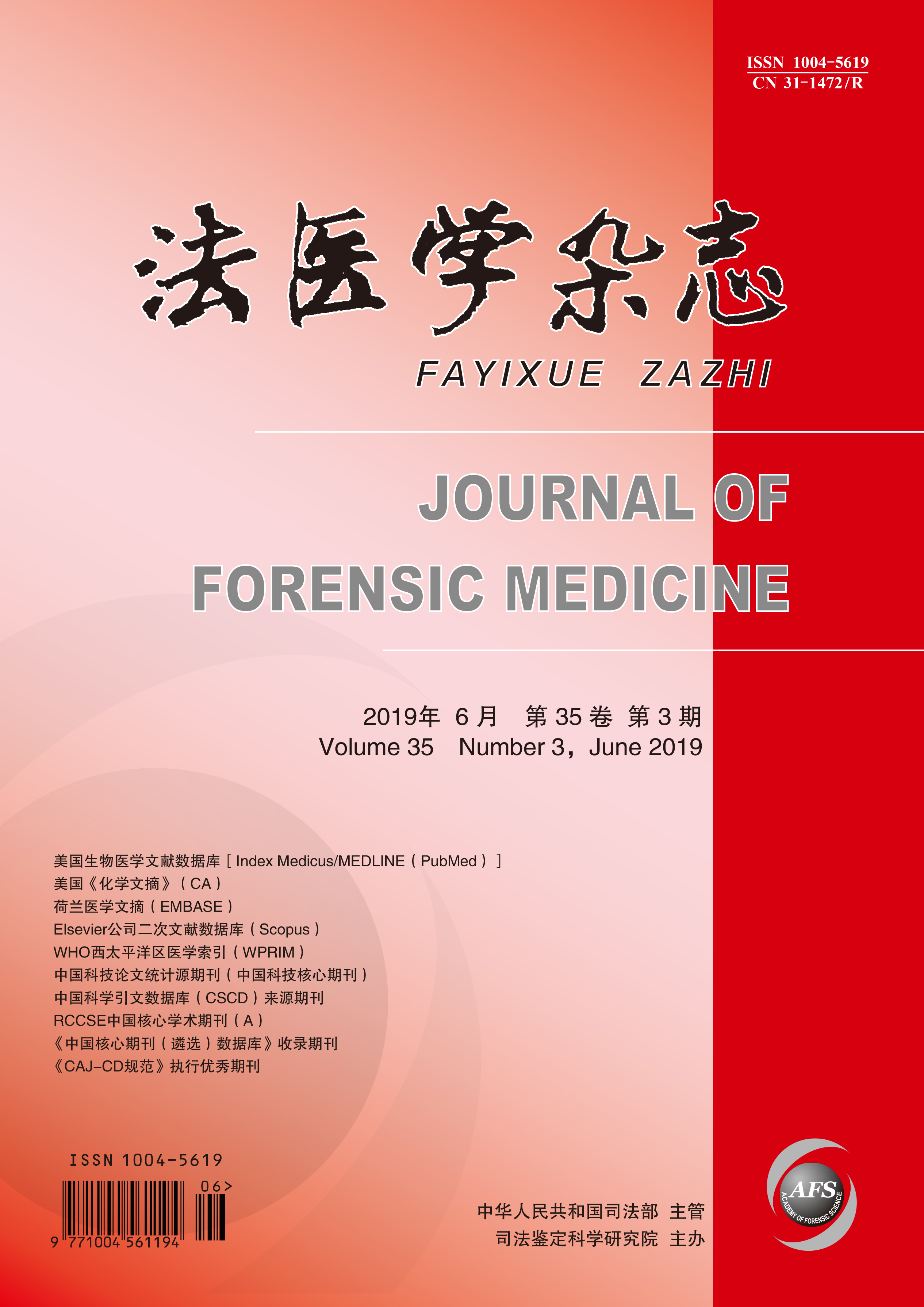|
|
Application of Multiple Genetic Markers in Determination of Full and Half Sibling Relationship: A Case Report#br#
LIAO Yong, WU Feng, HOU Dong-lin,et al.
2019, 35(3):
319-323.
DOI: 10.12116/j.issn.1004-5619.2019.03.011
Objective To investigate the application of the comprehensive use of multiple genetic markers in full and half sibling relationship testing through the identification of a case of suspected sibling relationship. Methods Genomic DNA were extracted from bloodstain samples from 4 subjects (ZHANG-1, ZHANG-2, male; ZHANG-3, ZHANG-4, female). Autosomal STR loci, X-STR, Y-STR loci and polymorphisms of mtDNA HV-Ⅰ and Ⅱwere genotyped by EX20 STR kit, X19 kit, Data Y24 STR kit, and Sanger sequencing, respectively. Results According to autosomal STR based IBS scoring results, full sibling relationships were indicated among ZHANG-2, ZHANG-3 and ZHANG-4, but those were not indicated between ZHANG-1 and ZHANG-2 or ZHANG-3 or ZHANG-4. According to autosomal STR based FSI and HSI, with ITO method and discriminant function method, full sibling relationships among ZHANG-2, ZHANG-3 and ZHANG-4 were indicated, and half sibling relationships between ZHANG-1 and ZHANG-2 or ZHANG-3 or ZHANG-4 were also indicated. X-STR and mtDNA sequencing results showed that all the 4 samples came from a same maternal line, and Y-STR results showed that ZHANG-1 and ZHANG-2 did not come from a same paternal line, which supported the half sibling relationship between ZHANG-1 and ZHANG-2 or ZHANG-3 or ZHANG-4, verified by parental genotype reconstruction based on autosomal STR genotyping. Conclusion For the identification of sibling relationships, it is effective to have reliable results with the mutual verification and support of multiple genetic markers (autosomal STR, sex chromosomal STR and mtDNA sequence) and calculations (IBS, ITO, discriminant function method and family reconstruction).
Related Articles |
Metrics
|


